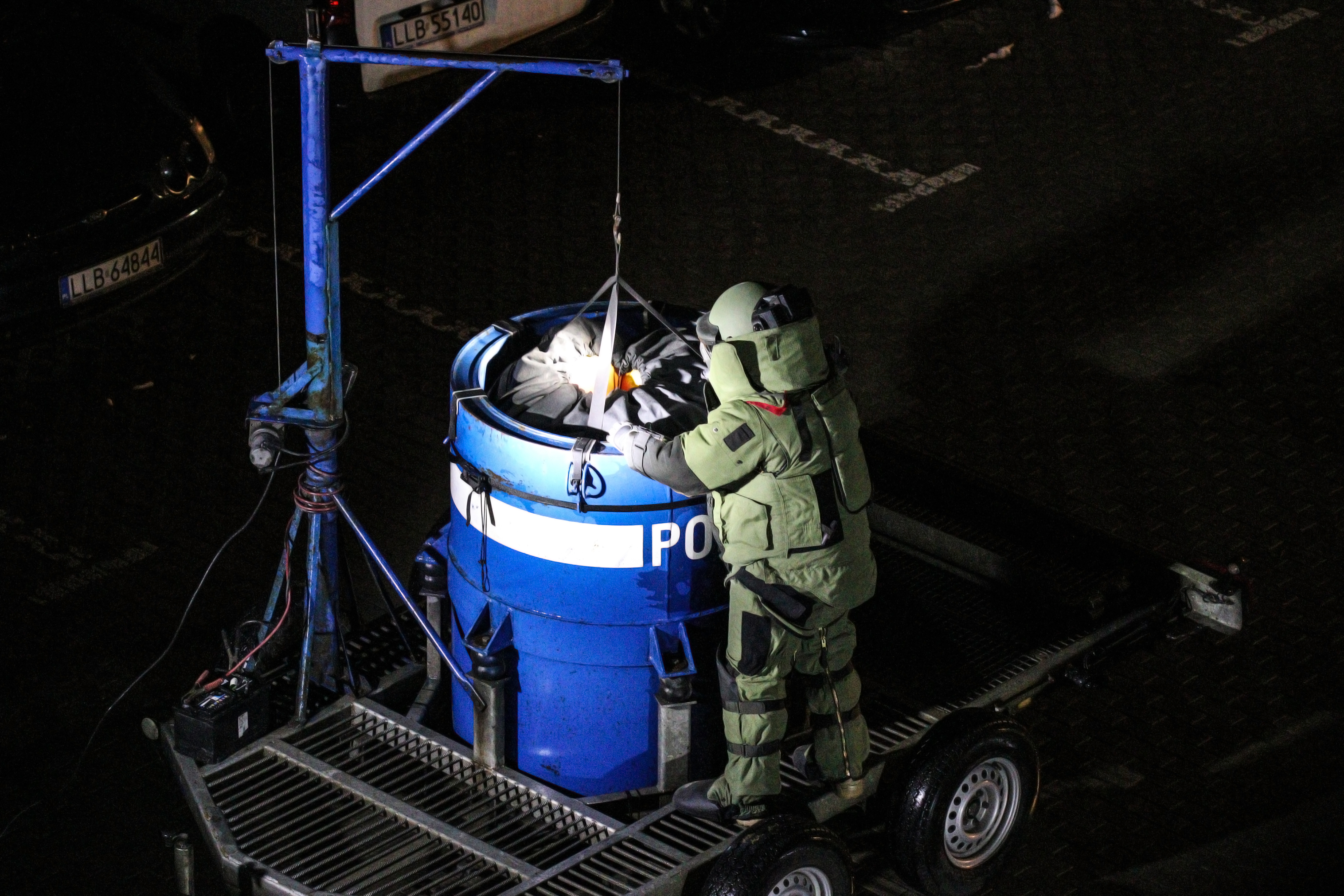Share This Article
By Sahar Adatia and Jimmy Singh.
Last week, a live explosive was discovered in a property in Sydney’s Eastern Suburbs, leaving families with no choice but to abscond as they took to their safety.
At around midday on 21 February 2020, officers from the Eastern Suburbs Police Area Command were called to a building in Reina Street in North Bondi after an active mortar round was found.
A 300m exclusion zone was established around the premises while residents were asked to evacuate the area and tradespeople sent home from the site as the level of risk was assessed.
It is uncertain how the explosive device ended up in the building.
Residents were forced to wait until 6:30pm when they were finally able to return to their homes.
Police and Bomb Disposal Experts Transport Explosive to Nearby Golf Club to be Detonated
Police and Australian Defence Force bomb disposal experts on the scene soon learnt the explosive was, in fact, a WWII-era ordnance.
At about 3pm, they carefully removed the grenade and transported it nearby to Woollahra Golf Club on Manion Avenue in Rose Bay to be safely detonated.
Just before 6pm, bomb disposal experts managed to discharge the device securely and successfully in a controlled manner.
Officers were seen digging a trench and removing a pile of sandbags, amongst which the detonation is believed to have occurred.
A bartender working at the golf club said the situation was calm and “there was no panic” amongst visiting members despite the explosion.
“It’s been a fun little thing and everyone’s been talking about it,” he said.
“I heard the explosion; it was just a base-heavy reverberation.”
Police thanked Woollahra Council, Woollahra Golf Club and The Royal Sydney Golf Club for their help with the matter.
For more information around the law and penalties on this topic, contact our Sydney team of criminal lawyers to arrange a free consultation.
What is a Mortar?
A mortar is an artillery weapon consisting of a smooth-bore metal tube fixed to a base plate, which fires explosive shells (technically called bombs) at high angles.
They comprise of a short barrel that fires the mortar bomb at a low speed high into the air which then reaches its target.
Mortars do not have a long range, and as such, they are used to fire at targets that are close by.
Modern adaptations of mortars date back to the “Stokes Mortar” devised by Sir Wilfred Stokes in 1915 during the First World War.
This modern version of the weapon consists of four main components – a barrel, a base plate, a bipod and a sight – and is easily transportable by one person.
The modern adaptation was suitable to the conditions of trench warfare, in which there was a significant need for a versatile and easily moveable weapon that could be manned by troops deep in the trenches.
Modern mortars are cheap and easy to produce, providing a weapon for quick and immediate indirect fire.
Compared to their older counterparts, they are portable due to their weight and size, which is usually light to medium.
What Does the Law Say About Placing an Explosive in or Near a Building, Conveyance or Public Place in NSW?
Section 48 of the Crimes Act 1900 makes clear that a person who causes an explosive to be placed in or neara building, or a vehicle, vessel, train or other conveyance, or a public place, with the intention of causing bodily harm to a person, is guilty of a criminal offence.
NSW Courts can impose a maximum penalty upon sentence for this of up to 14-year jail.
This maximum sentence can apply whether or not an explosion occurs, or whether or not body harm is caused on any person.
Thus, you can be found guilty of this offence merely from having the intention to cause harm to another person and it is not necessary for the explosion to occur or for a person to experience bodily harm.
The offence of placing explosives in or near a building, conveyance or public place is a ‘strictly indictable offence’. This means that unless it is resolved earlier by way of withdrawal of charges by the prosecution, it will be finalised by either a trial or sentence in the District Court, instead of the lower court referred to as the ‘Local Court’ presided over by a Magistrate instead of a Judge.
Under the rule 4 Explosives Regulation 2013, an explosive includes goods too dangerous to be transported (within the meaning of the ADG Code or the Australian Explosives Code) that can produce an explosive or pyrotechnic effect, as well as articles or substances that, when manufactured, mixed or assembled, can produce an explosive or pyrotechnic effect.









